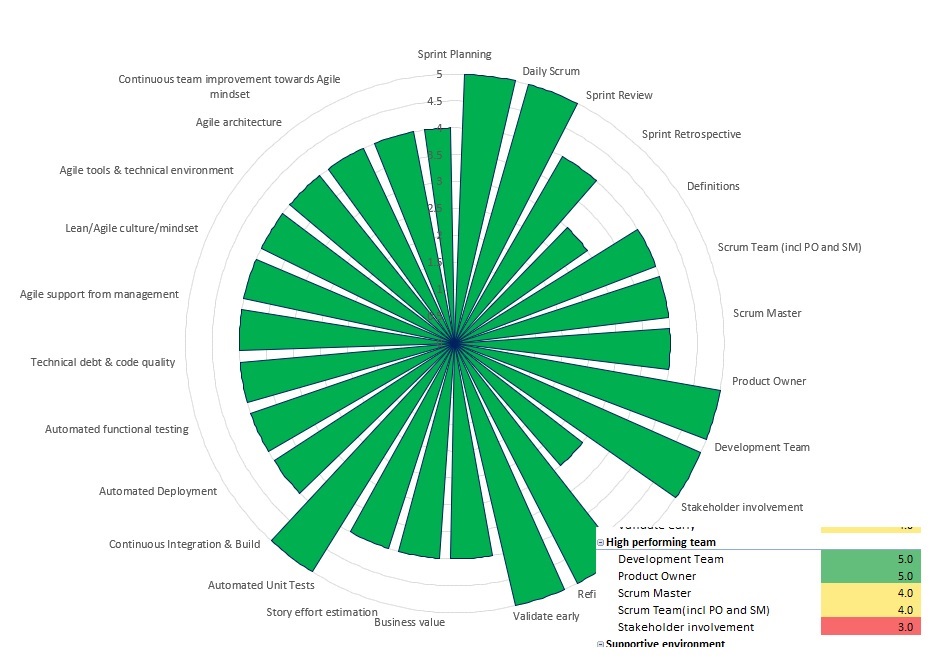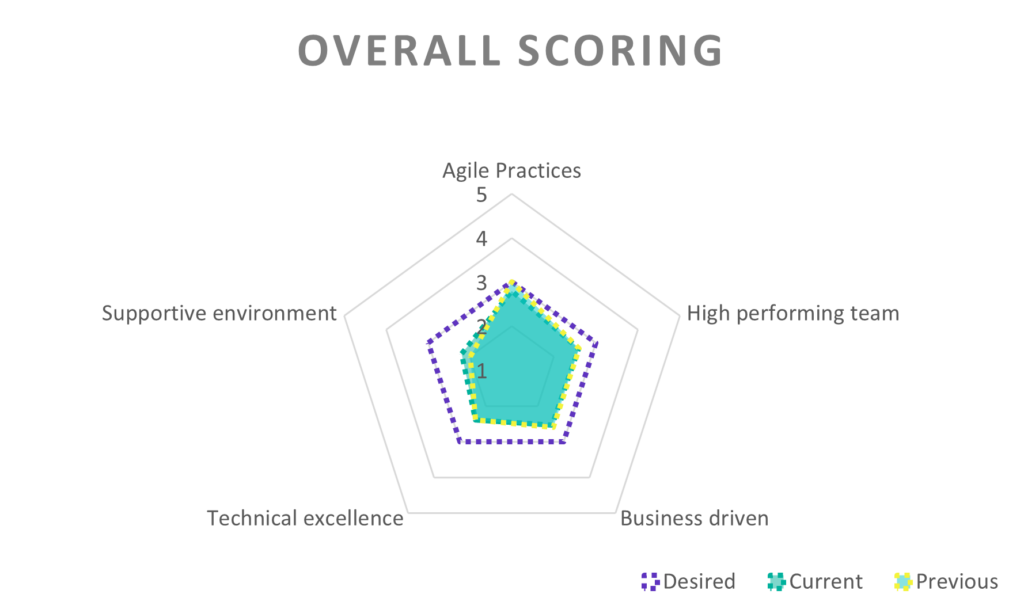Agile Fluency

Agile Maturity Matrix – Five Levels


Agile Practices
Agile Scrum Tools and Techniques; Artifacts · Product Backlog · Sprint Backlog; Sprint Planning · Daily Scrum or Standup · Sprint Review
- Individuals and interactions over processes and tools
- Working software over comprehensive documentation.
- Customer collaboration over contract negotiation.
- Responding to change over following a plan.
High performing Team
High-performing agile teams focus on process excellence, engineering excellence, and people excellence. This attitude helps to improve themselves and the team, which results in delivering quality solutions to customers. Opportunities for innovation and continuous improvement are part of their work culture.
Business driven
Business-driven development is a meta-methodology for developing IT solutions that directly satisfy business requirements. This is achieved by adopting a model-driven approach that starts with the business strategy, requirements, and goals, and then refines and transforms them into an IT solution. The transformation is partially achieved by applying model transformations. Due to the alignment of the business layer and the IT layer, it is possible to propagate changes of the business automatically to the IT systems. This leads to increased flexibility and shorter turnaround times when changing the business and adapting the IT systems.
Technical excellence
Technical excellence focuses on an app’s nonfunctional requirements (NFRs) or operational aspects, such as performance, reliability, and cost. Often, product teams assess NFRs only after a significant release or when problems, such as frequent outages, occur. Yet NFRs can also affect how well an application fulfills its functional requirements, the behavioral aspects that product teams use to assess whether the app is successful.
Supportive environment
An agile environment, therefore, is one that fosters and supports a culture that encourages teams to work collaboratively toward achieving goals, while implementing the Agile framework and following its values and principles.
A continuous integration and continuous deployment (CI/CD) pipeline is a series of steps that must be performed in order to deliver a new version of software. CI/CD pipelines are a practice focused on improving software delivery throughout the software development life cycle via automation


Maturity level
LEVEL 5 – Optimizing – Effective use of People, Framework and tools
LEVEL 4 – Competent & measurable – Ability to use the skill, process and technology
LEVEL 3 – Consistent & repeatable – Follow the process within ability same way over time
LEVEL 2 – Initial/Ad Hoc – Not consistent, act as needed
LEVEL 1 – Non-existent – Not follow Agile
Agile leadership is a leadership style that strives to remove roadblocks to success so that employees can be more effective and productive.
– Meet our Team
